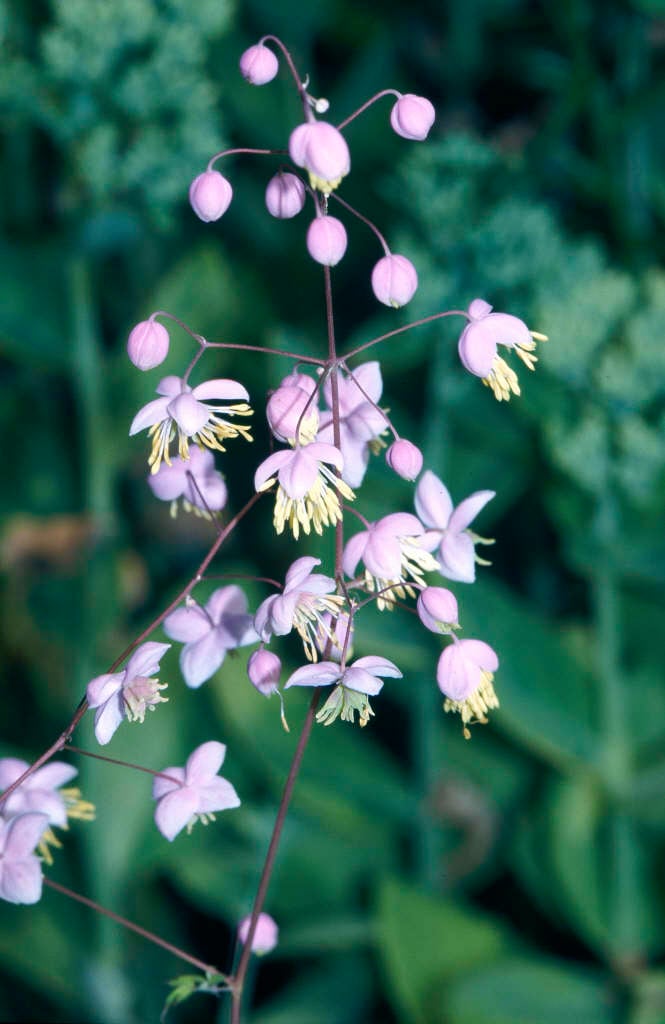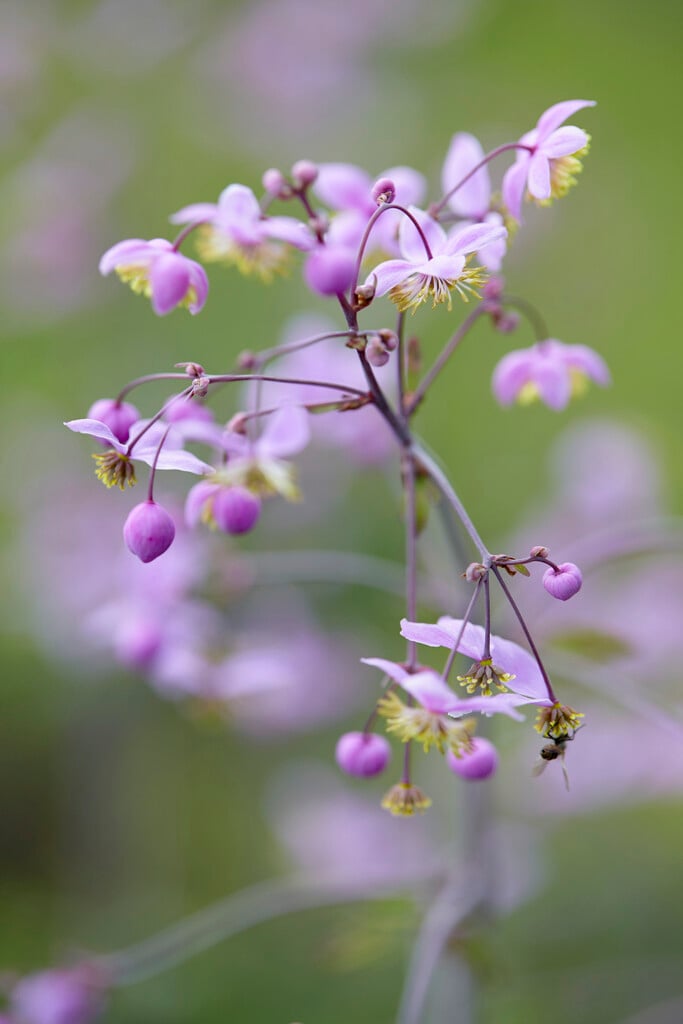Thalictrum delavayi
Chinese meadow rue
An upright, herbaceous perennial to 1.5m, with large, blue-green green leaves divided into many small oblong leaflets. Large, open panicles of lilac-mauve flowers 2cm in width, with prominent cream stamens appear from July through to September
Size
Ultimate height
1–1.5 metresTime to ultimate height
2–5 yearsUltimate spread
0.1–0.5 metresGrowing conditions
Moisture
Moist but well–drained, Poorly–drainedpH
Acid, Alkaline, NeutralColour & scent
| Stem | Flower | Foliage | Fruit | |
| Spring | Blue Green | |||
|---|---|---|---|---|
| Summer | Purple Cream | Blue Green | ||
| Autumn | ||||
| Winter |
Position
- Partial shade
Aspect
East–facing or West–facing
Exposure
Sheltered Hardiness
H7Botanical details
- Family
- Ranunculaceae
- Native to GB / Ireland
- No
- Foliage
- Deciduous
- Habit
- Columnar upright
- Potentially harmful
- Contact with foliage may irritate the skin. Wear gloves and other protective equipment when handling
- Genus
Thalictrum can be rhizomatous or tuberous perennials with ternately or pinnately divided, often attractive foliage, and panicles or racemes of small flowers with showy stamens and sometimes large colourful petal-like sepals
- Name status
Correct
- Plant range
- China Tibet
How to grow
Cultivation
Grow in moist, humus-rich soil in partial shade. May need staking. See staking perennials for further advice
Propagation
Propagate by seed in pots in a cold frame as soon as seed is ripe or in early spring. Propagate by division in spring as new growth begins
Suggested planting locations and garden types
- Cottage and informal garden
- Wildlife gardens
- Cut flowers
- Flower borders and beds
Pruning
Cut down stems once flowering is over
Pests
Generally pest-free
Diseases
May be susceptible to powdery mildews in dry conditions
Get involved
The Royal Horticultural Society is the UK’s leading gardening charity. We aim to enrich everyone’s life through plants, and make the UK a greener and more beautiful place.

